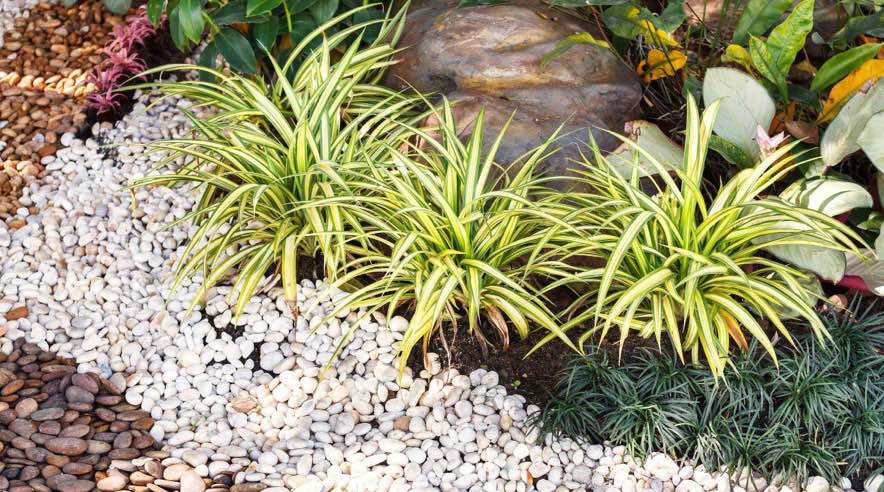In natural landscapes, rainwater and snowmelt filter down into the ground slowly. This slow infiltration recharges groundwater and filters out contaminants, promoting water quality. A rain garden in your yard can capture and keep vital moisture available for your plants and the local aquifer.
In many built areas, pavement, roofs, gutters, compacted soils, and storm drains disrupt groundwater recharge. Instead of moisture percolating down into the ground, stormwater systems funnel it through stormwater systems into waterways. Unfortunately, fertilizers, oil, chemicals, and bacteria are washed away as well, contaminating this precious resource and funneling it away.
A delightful way to bring the water functionality of natural landscapes into our yards and gardens is by creating a rain garden. These lovely creations utilize runoff from roofs and yards and channel them into a small depression in the yard. Wildlife thrives with water, thus adding a rain garden is rewarding, even if it is a small area.

A common misconception about rain gardens is that they commonly have standing water. In ideal conditions, water pools for only several hours before percolating down. Adding a rain garden involves rerouting the downspouts or runoff into a depression in the yard where it can filter down. This requires some advanced planning and is a fun weekend project.
Observe and Measure
Get started by observing how water flows across your yard, roof, and driveway during heavy rainfall. How much water do you have to manage and where does it pool? Topography, soil composition, vegetation, and impervious surfaces affect the water flow across the landscape. Explore how rerouting gutters, downspouts, and driveway runoff will impact the movement and accumulation of water.
Then, it is time to crunch some numbers. Use the Rain Garden Alliance calculator to estimate your rain garden’s ideal size and depth. It is essential to design the rain garden so it can handle the quantity of water it will receive. If you notice that water already pools in an acceptable location, try to work with the existing garden topography when you site your new garden. It might require expanding this area if it already gets saturated. Because water flows downhill, make sure the rain garden is located downhill from the water source.
Beware of water accumulating around the foundation of your house, and be sure to redirect it to an ideal location that is at least 10 feet away from your house. This helps prevent basement flooding and mold issues.
Creating Contours
To make the rain garden, start with an existing depression in your yard, or create a new one with a shovel. Don’t just remove the topsoil, ensure that there is ample soil left to capture water. It’s essential to have sufficient soil in the rain garden basin as a medium for plant growth. Your rain garden will need at least 6 inches of soil for it to function correctly.
The way water percolates down into your new garden depends on your soil composition. If you have excessive amounts of sand in the soil, rainwater will drain into the ground too fast. Topsoil and compost are needed to correct this. Too much clay in your soil causes water to pool beyond what is desirable for your new rain garden. Adding two parts sand, one part compost, and one part topsoil is an excellent way to improve drainage.
Water Infiltration
The purpose of a rain garden is not to collect rainwater but rather to encourage it to filter down into the ground.
You can easily test how water percolates in the soil by digging a 12-inch deep hole and filling it with water. It should completely drain out of the hole within 24 hours. Since standing water also encourages mosquitos, which could take advantage of standing water for breeding, be careful to ensure there is sufficient drainage.
Preparing the Garden Bed
If the future rain garden site contains grass, remove it, and possibly save it to create a small berm to channel the water.
Select vegetation based on your location. Consider if your site is in the sun or shade when selecting plants. The Old Farmer’s Almanac has a list of plants for both sun and shade and lists if plants are native. Rain gardens commonly include wildflowers, ferns, shrubs, and even small trees. Water-tolerant native or edible vegetation is ideal for areas of the yard where water pools. Avoid introducing invasive species.
Place the most water-tolerant plants in the center or lowest point in the garden where water will collect the longest. Plant natives whenever possible, especially in the outer edges where plants need to be more drought tolerant to avoid supplemental irrigation.
The post How To Create a Rain Garden appeared first on Earth911.








